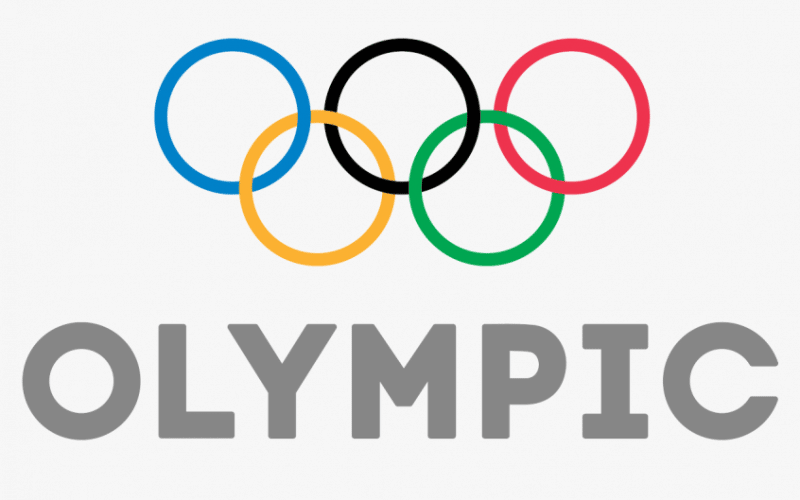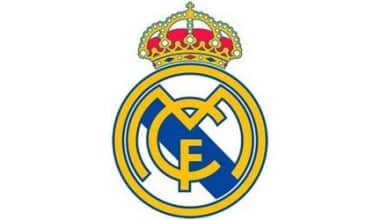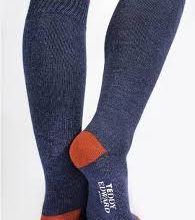The largest sporting event in the world is the Olympic Games. The Olympic Games have a colorful history and is a celebration of the human spirit, community, fairness, greatness, and world peace. Every four years, the event brings in thousands of athletes from all over the world who try their best to win a medal. But how much of its history and the famous Olympics logo do you know?
Let’s take a deep dive into the history, meaning, and evolution of the Olympics logo and the brand itself.
Olympics Logo Meaning
The Olympic logo is made up of five intertwined rings that are all the same size. It can be used alone or with one to five different colors.
The colors are blue, yellow, black, green, and red from left to right. The Olympic rings show what the Olympic movement is all about. They show how the five continents come together and how athletes from all over the world compete at the Olympic Games.
However, arguing that each color represents a specific continent is incorrect. In reality, the five colors and white background used by Pierre de Coubertin to build the rings in 1913 represented all flags flown at the time by all countries.
The Olympics’ five interlocking rings, which are colored blue, yellow, black, green, and red, stand in for the world’s five major continents. The Olympic flag’s white backdrop and colored rings were chosen since every nation uses at least one of those colors in its national flag.
The Olympic flag, unfurled for the first time at the 1920 Antwerp Olympics, is based on a design by Baron Pierre de Coubertin, the founder of the modern Olympics. It was first displayed to the public in 1913.
The Olympic rings now come in seven official variations, including the main flag, five monochromatic versions in each of the five colors, and a black-and-white version with white circles on a black background.
History of the Olympics Logo
The logo for the 1896 Summer Olympics is one of the first modern Olympic emblems. It is based on the theme of Ancient Greece. The same visual theme was chosen as the emblem for the Summer Olympics in Paris in 1900.
Olympics Logo: 1912 – 1986
The original Olympic Games five rings logo, which featured thick lines of the five colored elements, was introduced in 1912. The badge appeared solid and bright, but it was heavier and darker in comparison to the current logo.
Olympics Logo: 1986 – 2010
The 1986 redesign refined the contours of the rings and added some thin white lines where they intertwined. Colors were also refined and made more appealing. This logo appeared to be more professional and stylish than the original.
Olympics Logo: 2010 – Today
Kenjiro Sano, a Japanese graphic designer, created the Tokyo 2020 Olympic Games logo. A red circle is one of its distinguishing features. It is meant to resemble the circle on the Japanese flag. In the shape of the letter “T,” there are also grey and gold blocks.
Foundation Of Olympics
The Olympic Games, which date back as far as 3,000 years to ancient Greece, were resurrected in the late 19th century and have grown to be the most prestigious sporting event in the world.
They held the Games in Olympia, on the western Peloponnese peninsula, four times a year from the eighth century B.C. to the fourth century A.D., in remembrance of the god Zeus. With 280 athletes competing in 43 events from 12 different countries, they held the first modern Olympics in Athens in 1896.
The Winter and Summer Olympic Games have rotated every two years since 1994, with each sport taking place in a distinct venue. Figure skating, ice hockey, curling, and other winter sports will be displayed during the 2022 Winter Olympics in Beijing, China, which run from February 4 to February 20, 2022.
Olympics Logo: History Of Olympics
The oldest recorded accounts of the ancient Olympic Games dated from 776 B.C. when a cook by the name of Coroebus won the only competition, a 192-meter footrace known as the stade (the forerunner of the modern “stadium”).
But it’s generally accepted that the games had already been going for a long time by that point. By the end of the 6th century B.C., the Games had become the most well-known Greek sporting events. It was said that Heracles (the Roman Hercules) and Alcmene, a human woman, started the Games.
The first Olympic marathon was held at the 1896 Games, and it was raced along the same 25-mile path as the Greek soldier who, in 490 B.C., traveled from Marathon to Athens carrying word of a victory over the Persians.
Spyridon Louis of Greece took home the first gold in the competition, which was only fitting. 26 miles and 385 yards would become the standard distance in 1924.
Read Also: MARVEL LOGO: History & What You Should Know!!!
After 13 Olympiads, two more races were added to the schedule: the “diaulos,” which was about like the 400-meter race of today, and the “dolichos,” which was a longer race, possibly like the 1,500-meter or 5,000-meter event.
The pentathlon, made up of five events, was first held in 708 B.C. It was followed by boxing in 688 B.C. and chariot racing in 680 B.C. The pentathlon consists of five events: a foot race, a long jump, discus and javelin throws, and a wrestling match.
In 648 B.C., Pankration became an Olympic sport. It was a mix of boxing and wrestling with almost no rules. At first, only freeborn Greek men were allowed to compete in the Olympic Games; there were no women’s sports, and married women were not allowed to attend.
Olympics Dates
After the old Olympics were discontinued in 1803, or 1,503 years ago, they inaugurated the modern Olympic Games. With only two exceptions (during World War I and II), these games, typically held every four years, have fostered international unity.
#1. Olympics in Athens, 1896
During the first few weeks of April 1896, Athens, Greece, hosted the first modern Olympic Games. The 241 competitors wore athletic club uniforms rather than their countries’ and only represented 14 nations. Eleven of the 14 nations present have been formally acknowledged in award records:
- Australia,
- Austria,
- Denmark,
- England,
- France,
- Germany,
- Greece,
- Hungary,
- Sweden,
- Switzerland, and the
- United States.
#2. Paris Olympics in 1900
As a part of the World Exhibition, they held the second Modern Olympic Games in Paris from May to October 1900. The games lacked structure and received little publicity. There were 997 competitors from 24 nations.
#3. Olympic Games in St. Louis in 1904
From August to September 1904, St. Louis, Missouri, hosted the competitions of the third Olympiad. Only 62 of the 650 competitors that competed were from outside North America due to tensions from the Russo-Japanese War and difficulties traveling to the United States. Only 12 to 15 countries were represented.
#4. 1906 Athens Olympics, unofficial
The Athens Games of 1906 were the first and only “intercalated games,” intended to exist every four years and only take place in Athens, Greece, after the 1900 and 1904 games produced little excitement. The president of the Modern Olympics later deemed the 1906 Games unauthorized.
#5. 1908 London Olympic Games
The fourth Olympic Games were supposed to be held in Rome, but after Mount Vesuvius blew its top, they were moved to London. The first games with an opening ceremony were also the ones that were regarded as the most well-planned.
#6. Olympics in Stockholm in 1912
The electric timing equipment and a public address system were used for the first time at the fifth official Olympic Games. Over 2,500 athletes from 28 different countries competed. Even today, people still praise these games for being the best organized ever.
#7. Olympic Games of 1916
The games were abandoned because of escalating World War I hostilities. They were initially supposed to go to Berlin.
#8. 1920 Olympics in Antwerp
Several nations destroyed by the war could not participate in the VII Olympiad since it was held directly after World War I. They displayed the Olympic flag for the first time during these games.
#9. 1924 Olympics in Paris
They held the VIII Olympiad in Paris from May to July 1924 at Pierre de Coubertin’s request and in his honor as the departing IOC president and founder. The opening Olympic Village and the closing ceremony were the first for these Games.
#10. 1928 Olympics in Amsterdam
There were brand-new events at the IX Olympiad, like men’s track and field and women’s gymnastics. There were 3,000 athletes from 46 nations.
#11. Olympics in Los Angeles in 1932
Traveling to California for the X Olympiad seemed impossible because the Great Depression was still going on worldwide. This made it hard for invited countries to show up.
#12. Tokyo Olympics in 2020
On September 7, 2013, Tokyo, Japan, was given the XXXII Olympiad by the IOC. Madrid and Istanbul were other candidates. The COVID-19 epidemic caused the games to be delayed from their initial start date of July 24 to their end date of August 9, 2020. They will now occur between July 23 and August 8, 2021.
Facts About Olympics
#1. At the 1900 Paris Olympia Games, they massacred pigeons
The only time they had killed live animals for sport during an Olympic event was that one. A pigeon-shooting competition was part of the 1900 Paris Olympic Games. The competition was won by Belgian Leon, who made 21 of 300 shots.
The International Olympic Committee (IOC) no longer recognizes the event. There were a few other unusual competitions in this Olympics, such as the standing broad jump and high jump, the underwater swimming competition, and the croquet, which only had one spectator.
The Games have never welcomed any of these competitions back.
#2. Half-cut medals
Although American pole vaulter Bill Sefton won the pole vault competition in the 1936 Berlin Olympics, Japanese athletes Shuhei Nishida and Sueo Oe wrote a new chapter in sportsmanship (and friendship).
They asked the two to compete in a tiebreaker because they tied for second place. They declined and chose to split the silver and bronze medals in half instead.
To create what is now known as “the medals of friendship,” they divided them in half and fused the silver and bronze halves.
#3. Depiction of women
The first Olympics to feature female competitors were those held in Paris in 1900. However, only at the London Olympics in 2012 did each participating country have female participants.
The first woman from Saudi Arabia to compete in the Olympics was judoka Wojdan Shaherkani at the same competition.
#4. “Marathon man”
Since the first Olympic competition in 1896, the marathon has been a modern-day Games component. However, it can be traced back to 490 BC, when a Greek soldier named Pheidippides ran from Marathon to Athens over a distance of around 40 km to tell the Athenians that their forces had defeated the Persian invaders.
He collapsed and passed away after the run, but not before accomplishing the assignment he had been given.
The long-distance race was created due to the widespread dissemination of the Pheidippides fable. The first definition of a marathon was made in 1921. It was 42.195 kilometers, almost the same distance as Pheidippides’ run.
#5. Just one stadium has twice hosted the Olympics.
The only Olympic venue to have held two Summer Games is the Los Angeles Memorial Coliseum. Here, the Games were first held in 1932 and again in 1984.
It will make history once more when it hosts the Games three times starting in 2028. The stadium, recognized as a National and California Historic Landmark, was constructed in 1923 in honor of American soldiers who served in World War I (1914–1918).
What Are The 5 Olympic Symbols?
Blue, yellow, black, green, and red interlaced rings make up the Olympic flag’s five interlaced rings in the center of a white backdrop. The six colors used in this design represent the current global and national flags, while the five continents of the world are symbolized by the Olympism that unites them.
What Do The 5 Olympic Rings Stand For?
The Olympic rings are a way for the Olympic Movement to show what it does. They show how the five continents come together and how athletes from all over the world compete at the Olympic Games.
Why Are There 5 Rings In The Olympic Logo?
Pierre de Coubertin came up with the design for the Olympic rings, which are still used as a universal symbol of the Olympic Movement and its activities. These five rings stand in for the five regions of the world that have embraced Olympianism and are prepared to welcome its strong rivalries.
What Does The 2022 Olympic Logo Mean?
Together, For a Peaceful World is the Olympic Day theme for 2022, and the hashtags #MoveForPeace and #OlympicDay will be used on social media to promote it. This Olympic Day honors the ability of sport to unite people in harmony.
What Is The Olympic Motto 2022?
The Olympic Motto for 2022 is Together, For a Peaceful World is the Olympic Day theme 2022,
What Is The Olympic Motto?
The new Olympic motto is “Faster, Higher, Stronger—Together,” which is translated from Latin as “Citius, Altius, Fortius—Communiter.” In the opening ceremony of a sporting event for students in 1881, the Dominican priest Henri Didon first said the original motto.
What do the seven Olympic values entail?
The Olympic and Paralympic principles of camaraderie, respect, excellence, equality, perseverance, inspiration, and courage are significant ideals for everyone, not only during the Olympics.
How do the Olympics operate?
In the more than 300 summer events and 100 winter events that make up the Olympics, more than 200 nations compete every other year. The top three teams or individuals in each event get a gold, silver, and bronze medal. There is a chance for every nation to garner the most medals.
Which nation inaugurated the Olympic Games?
Around 3,000 years ago, in the Peloponnese of ancient Greece, the Games first began. Olympia hosted sporting events that were given the moniker Olympic Games every four years. Although the exact year of their beginning is unknown, 776 BC is frequently mentioned in literary sources.
Conclusion
The Olympics logo is a crucial symbol for the Olympics game. The five rings that make up the Olympic logo are (from left to right) blue, yellow, black, green, and red. The rings represent the five continents coming together, athletes competing in these Games, and the activities of the Olympic movement.
We have also explained the History of the Olympics and every other thing you need to know.
I hope it was worth reading.
Related Articles
- HOW TO SAVE MONEY ON ELECTRIC BILL: Detailed Guide
- AUDI LOGO: History of The Luxury Audi Brand
- WHICH SPORTS MAKE THE MOST MONEY: 10 Highest Paid Sports in the World
- SEASONAL WORK: What It Is, Types, and How to Find one
- WEDDING RING INSURANCE: Should You Insure Your Wedding Ring?






